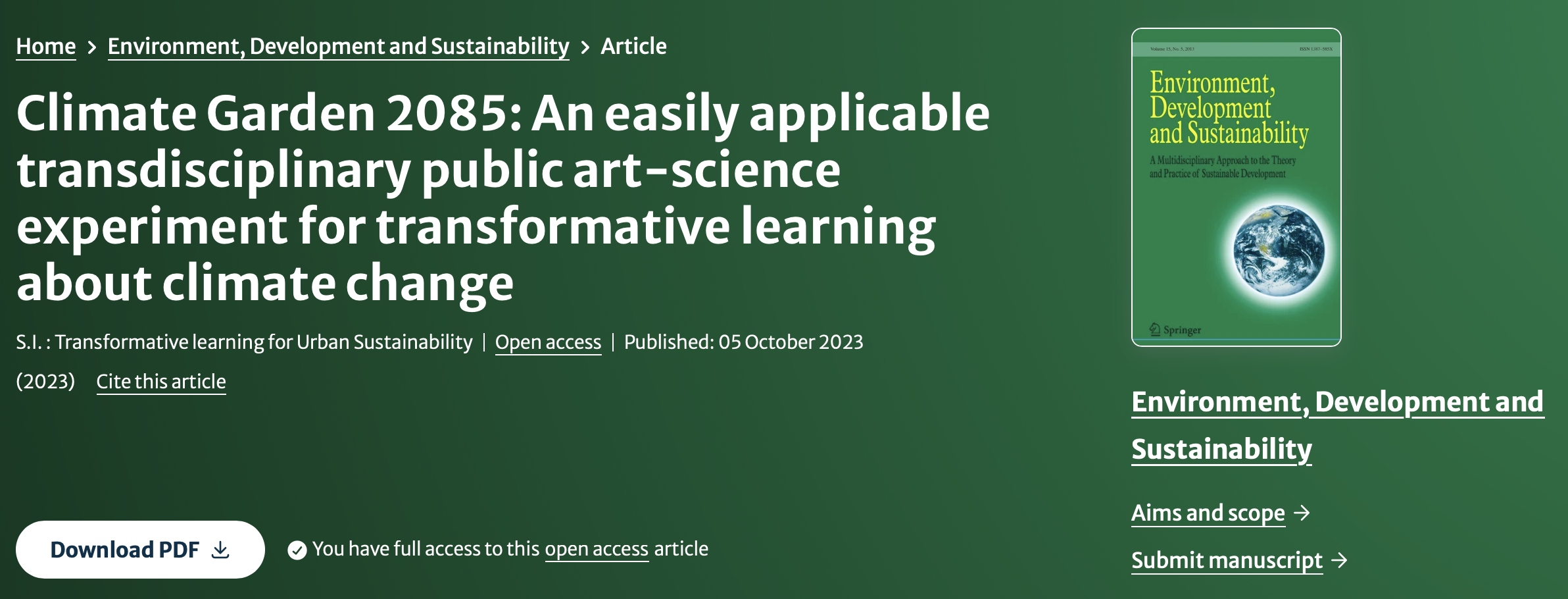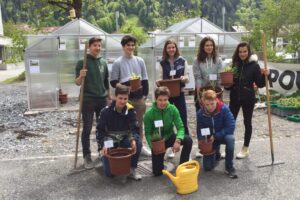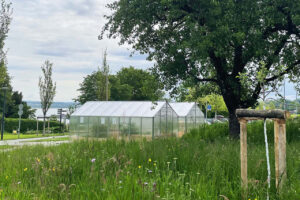By Manuela Dahinden
Climate Garden 2085 serves as a powerful example of how transformative education can address the urgent challenge of climate change. By combining scientific experimentation with artistic expression, the project engages students in a deep, reflective learning process that goes beyond mere knowledge acquisition. It empowers them to think critically about their role in shaping the future and to take meaningful action.
As climate change becomes an ever more pressing issue, innovative educational models like Climate Garden 2085 will play a crucial role in preparing the next generation to confront these challenges head-on. By fostering emotional engagement, critical thinking, and social learning, projects like this offer hope that we can cultivate a more sustainable future.
In our recent publication, we emphasized that transformative education is key to engaging students on an emotional level, which is essential for fostering lasting behavioral change (Schlaepfer-Miller et al., 2023). Climate Garden 2085 exemplifies this approach, proving that climate education, when done right, can be both impactful and empowering.
Schlaepfer-Miller, J., Kueffer, C. & Dahinden, M. Climate Garden 2085: An easily applicable transdisciplinary public art-science experiment for transformative learning about climate change. Environ Dev Sustain (2023). https://doi.org/10.1007/s10668-023-03899-2
The Role of Transformative Learning
Transformative education aims to foster deep, reflective learning that leads to a fundamental shift in how individuals see the world and their role in it (Rieckmann 2021). Climate Garden 2085 achieves this by creating an immersive environment where students critically engage with the complex realities of climate change. Through the garden project, students gain a deeper understanding of how global environmental issues intersect with personal choices, such as food consumption and sustainability.
Workshops accompanying the garden experience further enhance this learning. For instance, students participate in experiments like gas exchange measurements on plants subjected to drought, gaining insights into plant stress and resilience. These scientific activities are paired with reflective discussions, encouraging students to connect their observations with broader societal and environmental challenges. This critical thinking component is a cornerstone of transformative education, as it helps students move from learning about climate change to understanding how they can act on it.
In addition to scientific workshops, Climate Garden 2085 incorporates artistic activities, such as creating prints of plants using cyanotype techniques or building collages of imaginary plants. The integration of art encourages students to express their emotional responses to climate change creatively. By combining science and art, the project engages both analytical and imaginative thinking, fostering a more holistic understanding of climate issues.
Social Learning and Broader Impacts
Climate Garden 2085 doesn’t stop at individual learning. The project is embedded in schools and communities, creating opportunities for collective reflection and social learning. Students share their experiences with peers, family, and community members, spreading awareness and encouraging others to take action.
The project also encourages interdisciplinary collaboration within schools, connecting subjects like biology, geography, and art. Teachers are key facilitators of this collaboration, using the project to anchor climate education within their curriculums. Climate Garden 2085 has proven to be a versatile tool for engaging students across different disciplines, fostering a richer understanding of climate change that cuts across traditional subject boundaries.
Challenges and Future Directions
While the project has shown great promise, it faces some challenges. One difficulty is measuring the long-term impact on students’ behaviors and attitudes. While initial evaluations show that students become more aware of sustainable practices – such as consuming local foods or reducing waste – it’s unclear how lasting these changes are. A recent survey of participants indicated that 68.5% felt more aware of climate change’s impact on plants, but only a smaller percentage showed significant long-term behavior changes (Figure 5 and 6 in publication).


Another challenge is the risk of focusing too much on individual actions, like altering consumption habits, while neglecting the broader systemic changes needed to combat climate change. While personal choices matter, climate change is a global issue that requires coordinated policy efforts and structural changes. As such, future iterations of Climate Garden 2085 could place greater emphasis on the need for systemic solutions alongside individual responsibility.
The project continues to evolve, with plans to expand into more schools and create a network where participants can share resources and results. This collaborative network could help sustain the project’s impact and encourage cross-disciplinary participation, ensuring that climate education remains a long-term priority in schools.





